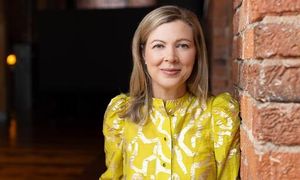The streets of west London pulsed with color, music, and a sense of unity over the Bank Holiday weekend as more than a million people flocked to the 57th annual Notting Hill Carnival. This year’s edition, which ran through Monday, August 25, 2025, was a vibrant celebration of diversity, resilience, and the enduring cultural impact of Caribbean migrants and their descendants on British society. Despite looming financial and safety concerns, the carnival went ahead, drawing revellers from across the globe—including, as it turns out, at least one Premier League football star incognito among the crowds.
On the final day of festivities, Chelsea and England striker Cole Palmer revealed he had slipped into the throng, disguised in faux dreadlocks, a rasta cap, a black face mask, and dark sunglasses. Palmer posted a photo to social media with the cheeky caption, “Blendinggg,” and tagged his location at the heart of the carnival. He also shared a video capturing the electric atmosphere, as reported by The Independent. Palmer’s playful attempt to go unnoticed was emblematic of the event’s spirit—one where barriers seem to dissolve, and everyone becomes part of the same dazzling tapestry.
The Notting Hill Carnival is widely recognized as one of the world’s largest street parties. According to Reuters, the event traces its roots to the Windrush generation: the hundreds of thousands of Caribbean migrants who arrived in Britain between 1948 and 1971 to help rebuild the country after World War II. Their arrival was met with both hope and hardship, as they faced racial tensions and systemic discrimination. Over the decades, the carnival has become a powerful symbol of multiculturalism and resistance, showcasing soca and reggae music, elaborate costumes, and a joyous parade of trucks draped in vibrant fabrics and sound systems.
This year, the festival’s message of unity and equality felt especially poignant. Jocelyn Kuyaziwm, a 29-year-old member of a masquerade group, told Reuters, “Continuing to do carnival every year just... reinforces the importance of equality and understanding everybody despite what background they’re from.” For many attendees, the gathering is more than a party—it’s a living, breathing assertion of inclusion and belonging in a city that’s constantly evolving.
Yet, behind the scenes, the 2025 carnival was almost derailed by financial troubles. Organizers came perilously close to canceling the event due to a lack of funds. As the Guardian reported, it was a last-minute injection of nearly £1 million from the London mayor’s office and two local councils that saved the day. Ian Comfort, the carnival’s chair, confirmed the event “came close to not happening this year.” The funding, however, was a one-off. Kim Taylor-Smith, deputy leader of Kensington and Chelsea Council, said the extra support from his authority was “for this year only” and called on the national government to step in to secure the carnival’s future. The uncertainty has left organizers and fans alike wondering how long this beloved tradition can continue without more stable backing.
Despite the challenges, the carnival’s power to bring people together remains undiminished. Longtime attendee Cristianne Bukhari, 35, voiced her frustration at what she perceives as official indifference: “There’s always going to be downsides. But if you look around... there are people from all over the world—white, Black, Asian—coming together and celebrating. We need more of this.” Her sentiment was echoed in the sea of faces, costumes, and music that filled the streets from Ladbroke Grove to Westbourne Park.
Safety, as ever, was a top concern for both organizers and authorities. In recent years, the carnival has faced criticism over violent incidents, and 2024 saw eight stabbings and two deaths. This year, however, the Metropolitan Police reported a notable decrease in serious violence. As of Monday evening, there had been 423 arrests over two days—223 on Monday, the day of the adult parade, and 200 on Sunday. The majority of arrests were for relatively minor offenses: 70 for cannabis possession, 46 for possession of offensive weapons, and 44 for drug supply. There were also 18 sexual offenses and five robberies. Crucially, only two stabbings were reported, neither resulting in serious injury, according to the BBC.
Police attributed the reduction in violence to a proactive approach that included live facial recognition (LFR) technology, metal detectors, and stop-and-search tactics. Assistant Commissioner Matt Ward noted, “The use of live facial recognition, metal detectors and stop-and-search had prevented some of the serious violence we have seen at previous carnivals.” Of the 423 arrests, 52 were made using the controversial LFR system. The technology, while credited with preventing harm, has drawn sharp criticism from civil liberty and anti-racism groups. In a letter to Met Commissioner Sir Mark Rowley, 11 organizations described LFR as “a mass surveillance tool that treats all Carnival-goers as potential suspects and has no place at one of London’s biggest cultural celebrations.” Critics argue the technology is less accurate for women and people of color, raising concerns about bias and privacy.
The debate over policing methods at the carnival is unlikely to subside anytime soon. The Metropolitan Police maintain that LFR is accurate across ethnicity and gender, but the tension between public safety and civil liberties remains at the forefront of the conversation. Last year, the event saw 334 arrests and two tragic deaths, including the fatal stabbing of Cher Maximen in front of her young child and the murder of chef Mussie Imnetu. The improved statistics this year have brought some relief, yet the need for vigilance persists.
As the steel drums faded and the last costumed dancers made their way home, the 2025 Notting Hill Carnival stood as a testament to London’s enduring spirit of multiculturalism—and the challenges that come with keeping such a vast, complex celebration both safe and sustainable. With funding uncertainties and debates over surveillance technology still unresolved, the future of the carnival hangs in the balance. But for one long weekend, at least, the city’s streets were alive with music, color, and a shared sense of possibility, reminding everyone why this event matters so much to so many.
For now, Notting Hill Carnival remains a beacon of unity, creativity, and resilience—a celebration that, against the odds, continues to bring Londoners together in joyful defiance of adversity.





